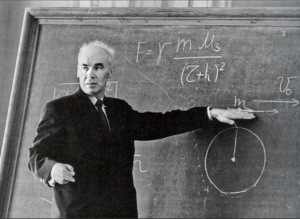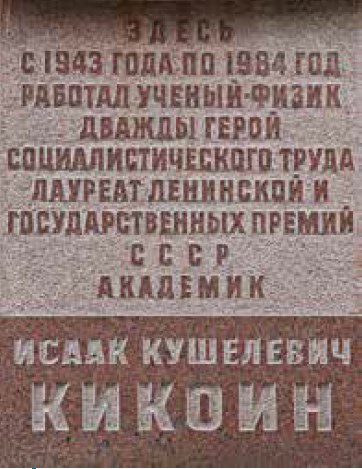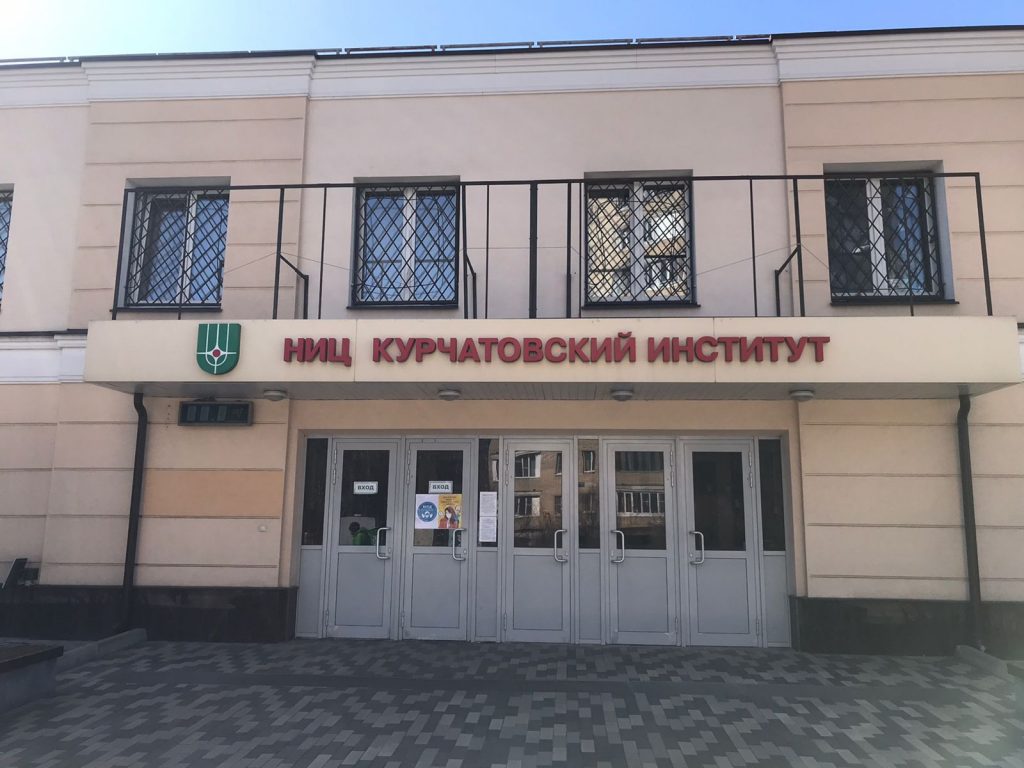Isaac Konstantinovich
Kikoin (Kushelevich)
1908-1984

Isaac Konstantinovich Kikoin (Kushelevich) was a Soviet experimental physicist, Academician of the USSR Academy of Sciences. He was from the family of a school teacher. During the First World War, with the approach of German troops in August 1915, the family was evacuated to the city of Lucine, the Vitebsk province (now the city of Ludza in Latvia), and in 1916 – to the city of Opochka, the Pskov province, where Isaac entered a real gymnasium. In 1921 he moved with his family to Pskov at his father’s new place of work, in 1923 he finished high school there. In 1925 he finished/ graduated from Pskov Land Management College. Since 1925, he was a student of the Physics and Mechanics Faculty of Leningrad Polytechnic Institute, from which he graduated in 1930. While still studying in 1928, he began working as an assistant in the laboratory of the Leningrad Institute of Physics and Technology. He immediately proved himself as a talented experimenter. In 1929 he published his first scientific work on the role of conduction electrons in ferromagnetism. In 1930 he was sent to Germany and the Netherlands for an internship at leading European physical laboratories. Since 1930 he was a researcher, then he was the head of the laboratory of the Leningrad Institute of Physics and Technology. He studied the electrical and magnetic properties of metals and semiconductors. Together with N.N. Noskov, he discovered a new phenomenon – the photomagnetic effect (called the Kikoin-Noskov effect), which has been widely used in modern physics. At the age of 27, he was awarded the scientific degree of the Doctor of Physical and Mathematical Sciences. In 1937 he was transferred to the Urals to develop new research educational institutions there, he was appointed the head of the Laboratory of Electrical Phenomena of the Ural Institute of Physics and Technology (now the Institute of Metal Physics of the Ural Scientific Center of the Russian Academy of Sciences, Yekaterinburg), which he headed until 1943. With the beginning of the Great Patriotic War, Kikoin’s laboratory was switched to solve defence tasks. In particular, in the interests of the defence industry, he quickly created a new type of ammeter for measuring very strong currents. In 1943 Isaac Kikoin was one of the first to be attracted by Igor Kurchatov to work on the creation of atomic weapons. While working on the first Soviet atomic bomb, Kikoin became the scientific director of one of the leading areas of the uranium problem — the separation of uranium isotopes in order to obtain the isotope uranium-235. As a result, the task of launching a plant to produce a highly concentrated isotope of uranium-235 in Sverdlovsk-44 was successfully solved. He made a great contribution to the creation of the first atomic bomb in the USSR, for which, after its successful test, he was awarded the Order of Lenin and awarded the Stalin Prize. He achieved significant results during the work on the creation of an atomic bomb of domestic design, which was successfully tested in 1951. From 1960 to the end of his life he was the Deputy Director of the I.V. Kurchatov Institute of Atomic Energy of the USSR Academy of Sciences in Moscow. For the first time he proved the presence of a galvanomagnetic effect in liquid metals, determined the value of the gyromagnetic ratio in semiconductors. He developed methods for measuring electrical quantities at significant direct currents, created a new type of ammeter for measuring very strong currents. He is one of the authors of the idea of holding All-Union physical Olympiads, in which he has always personally participated. He achieved the right to enroll school winners in the largest institutes and universities of the country without entrance exams. From 1969 until the last days of his life – the editor-in-chief of the scientific and educational magazine for students “Quantum”. He became the Hero of Socialist Labor twice. He lived in the hero city of Moscow. He was awarded the 7th Order of Lenin, the Order of the October Revolution, the Red Banner of Labor, the Order of the Red Star, the I.V. Kurchatov Gold Medal of the USSR Academy of Sciences and other awards.
Address: Moscow, Akademika Kurchatov pl., 1, p. 103A

